The project manager owns the responsibility of validating, documenting, and prioritizing project requirements. These tasks are fundamental to project success, but they come with a set of challenges.
Many modern projects are part of larger ecosystems or programs, where their success depends on the coordination of multiple interdependent projects. Defining requirements becomes complex because it involves aligning objectives across different initiatives, managing dependencies, and maintaining a well-coordinated project architecture.
In this guide, we’ll walk through strategies, tools, and techniques to uncover the true goal behind the requested project and how to translate it to the project team. 🌐
Download the ClickUp Project Management Requirements Template to follow along and start organizing your tasks!
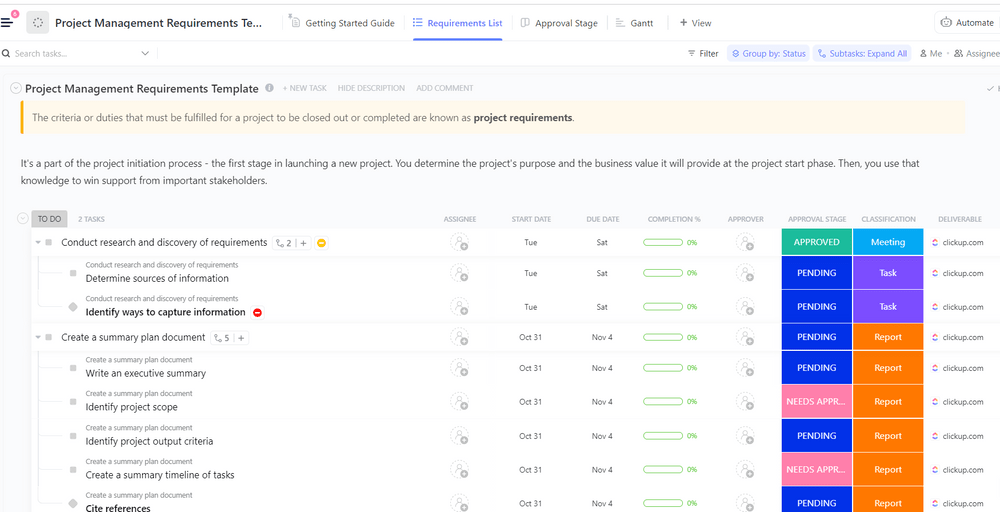
What are Project Requirements?
Project requirements are the specific standards, factors, or conditions a project needs to meet in order to be successful. Requirements help the project team understand what their goals are, what limitations they have, and what they want to achieve.
They also make sure that everyone involved in the project knows what is expected and that the project stays on track. Requirements cover things like what needs to be done, when it needs to be done, and how much it will cost.
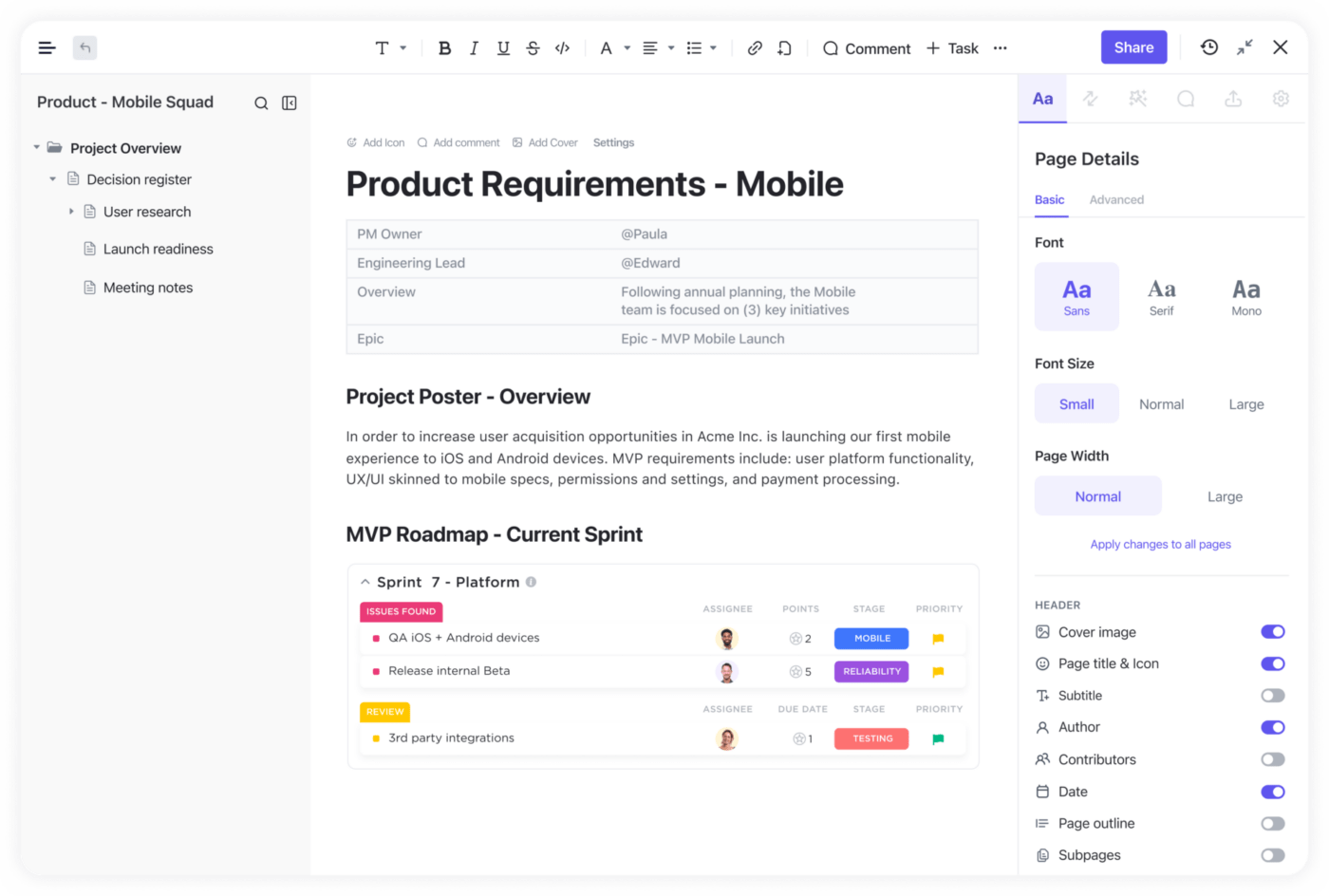
By keeping track of the requirements and regularly checking that the milestones are being met, project managers can reduce risks, make good choices, and stay focused on meeting deadlines!
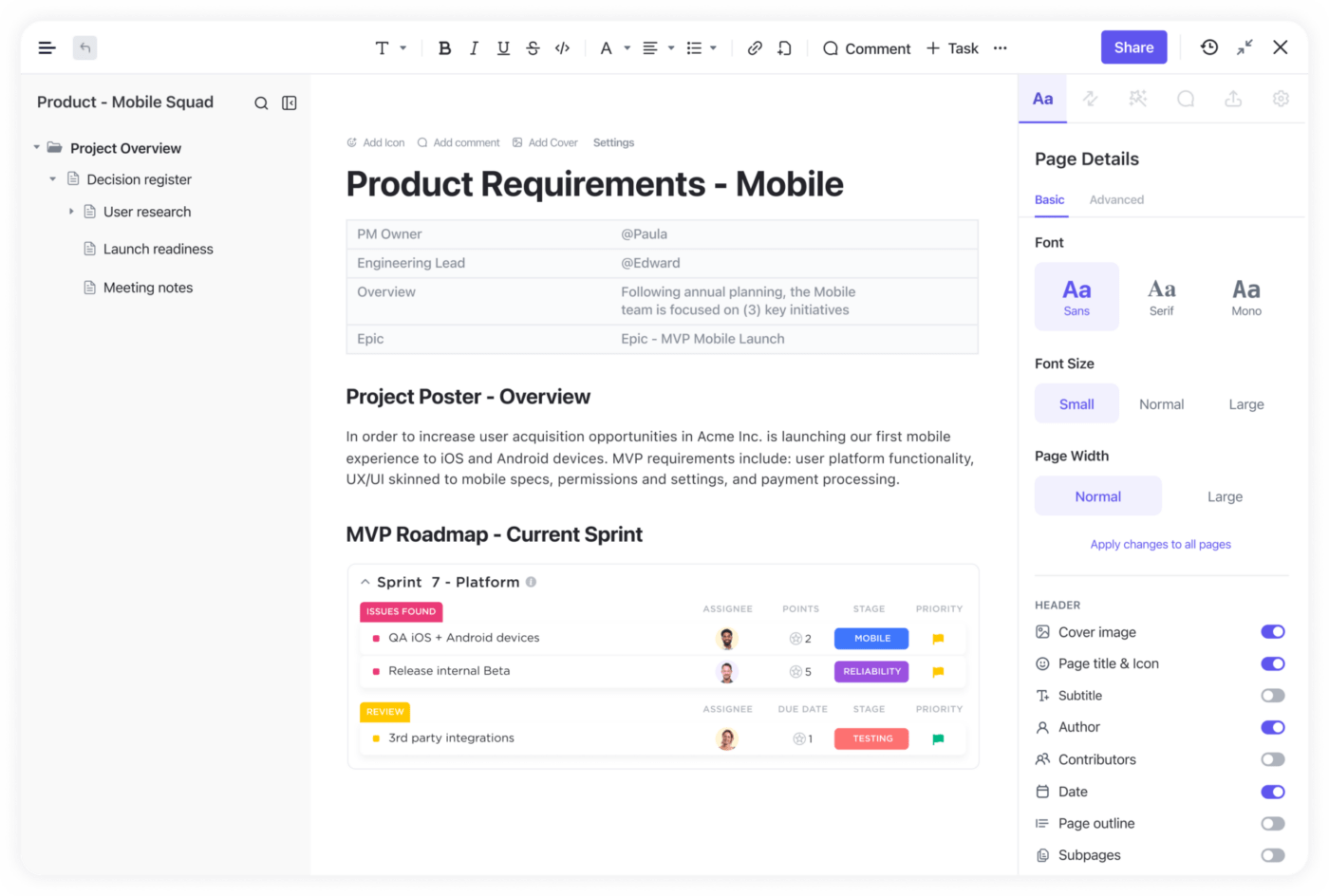
Learn more about requirements management planning!
Why is Gathering Project Requirements Important?
Understanding and gathering project requirements is a vital process in project management. It ensures that there’s alignment and understanding among all parties involved in the project, from team members to stakeholders and end users.
This shared vision, arrived through a transparent process, sets clear expectations and forms a fundamental facet of effective project planning, execution, and control. Gathering requirements aids in creating realistic project plans, timelines, budgets, and informs decisions regarding resource allocation, task assignments, and project scheduling.
It serves as a benchmark for measuring project progress and establishes tangible, definable goals for the team to strive towards. It’s also a proactive measure that helps identify potential issues, risks and mitigate them early on in the planning stage. This anticipatory approach lessens the likelihood of unpleasant surprises later on, curbing project delays or potential cost overruns.
⭐ Featured Template
Start strong with ClickUp’s Project Management Requirements Template. Capture, organize, and track all key project details so everyone stays aligned and on schedule. Try it for free today!
The different types of project requirements documents
Every successful project hinges on a solid understanding of its requirements. Project requirements lay the groundwork for project planning, execution, and ultimate success. We’ll dive into the four distinct types of project requirements project managers and stakeholders need to align on before any work is started.
Functional requirements
Functional requirements describe specific functionalities, actions, and behaviors that the project’s end product or service should exhibit. Functional requirements are often expressed in clear and measurable terms. There’s no room for ambiguity! These requirements are vital as they form the basis for designing, developing, and testing the project’s core features.
Examples of functional requirements include:
- User authentication: The system should allow users to log in securely with a username and password
- Payment processing: The application must process credit card transactions and generate payment receipts
- Data entry validation: The system should enforce data validation rules for accurate and consistent information
Non-functional requirements
Non-functional requirements focus on the quality attributes and characteristics of the project’s end product or service. Unlike functional requirements, they do not describe specific actions or functionalities. Instead, non-functional requirements establish criteria for evaluating the project’s overall performance, security, usability, and scalability.
They are essential for meeting project stakeholder expectations and guaranteeing the project’s success beyond its core functionalities. Examples of non-functional requirements include:
- Performance: The application should respond to user requests within two seconds for 90% of interactions
- Security: The system must comply with industry standards for data protection and encryption
- Usability: The user interface should be intuitive and accessible to individuals with disabilities

Technical requirements
Technical requirements cover the project’s technical aspects, encompassing hardware, software, platforms, and technologies necessary for successful project execution. These requirements provide guidance for the development team, and the chosen technology stack aligns with the project’s objectives.
Understanding technical requirements is crucial to securing a well-integrated and compatible solution. Examples of technical requirements include:
- Operating System Compatibility: The application should be compatible with Windows, macOS, and Linux operating systems.
- Database Management System: The project will use Oracle as the primary database management system.
- Programming Languages: The system will be developed using Python and JavaScript
Business requirements
Business requirements define the high-level objectives and outcomes the project aims to achieve from a business perspective. They provide a broader context for the project and align it with organizational goals. Understanding business requirements is key for project managers to prove that the project delivers tangible value and meets the needs of leadership.
Examples of business requirements include:
- Increase Market Share: The project should contribute to a 10% increase in market share within six months of launch
- Cost Reduction: The application should reduce operational costs by automating manual processes
- Customer Satisfaction: The project’s end product must enhance customer satisfaction by streamlining support services

How to Write and Document Project Requirements
Step 1: Define project scope and objectives
The first step in defining requirements is to create a project document that outlines the scope and objectives of your project. This will help you define the boundaries for what the project should accomplish, as well as provide a roadmap for how to get there. Be sure to include the names of relevant project stakeholders for each function or team so everyone is on the same page about ownership.
Check out more essential project documentation!
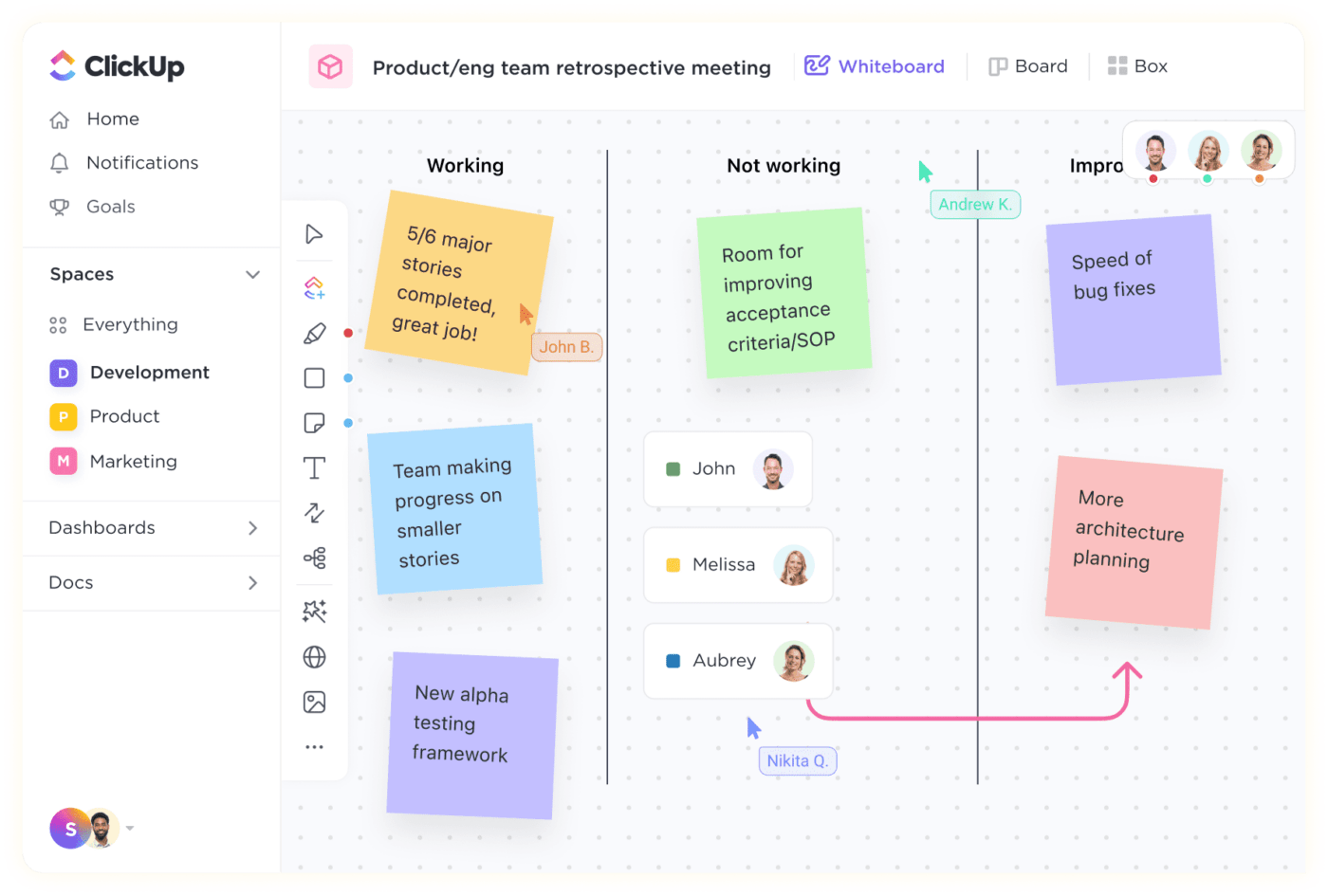
Step 2: Gather business and stakeholder requirements
Once the scope and objectives are defined, it’s time to move on to requirements elicitation. This process involves engaging key stakeholders to gather requirements, context, and expertise about what needs to be included in the project deliverables.
During these sessions, ask questions that help you determine the functional and non-functional requirements for your project. Make sure to document your findings, as this will help you create a comprehensive set of clear requirements!
Bonus: Requirements management tools!
Step 3: Document requirements
Once all of the requirements have been gathered, it’s important to create a single document that outlines all of the requirements. This document should include not only functional, non-functional, and user requirements but also any constraints or assumptions made during the process.
Bonus: Add an estimated timeline and budget for the project based on the requirements gathered. This will help you create a realistic plan for implementation!
Step 4: Review and validate requirements
Once the project requirements have been documented, it’s important to review them with key stakeholders and validate that they are accurate. This process should include a review of any assumptions made during the requirements elicitation workshops, as well as validating any constraints that may have been identified.

This is also an opportunity to discuss how changes to the requirements might impact other aspects of the project. Once all stakeholders are in agreement about the requirements, the document can be finalized and shared with the collective group!
Step 5: Monitor and control requirements
Monitoring and controlling project requirements will be a part of your day-to-day workload to support the project team. By closely monitoring requirements, project managers can assess scope creep and make adjustments to keep the project focused. This minimizes the impact on the project’s timeline, costs, and overall stability.
To effectively control project requirements, implementing a formal change control process will save you time. This process evaluates and approves requirement changes to align with project goals.
Utilizing a requirement traceability matrix (RTM) links project deliverables to specific requirements, providing clear visibility into progress. (More on this later!)
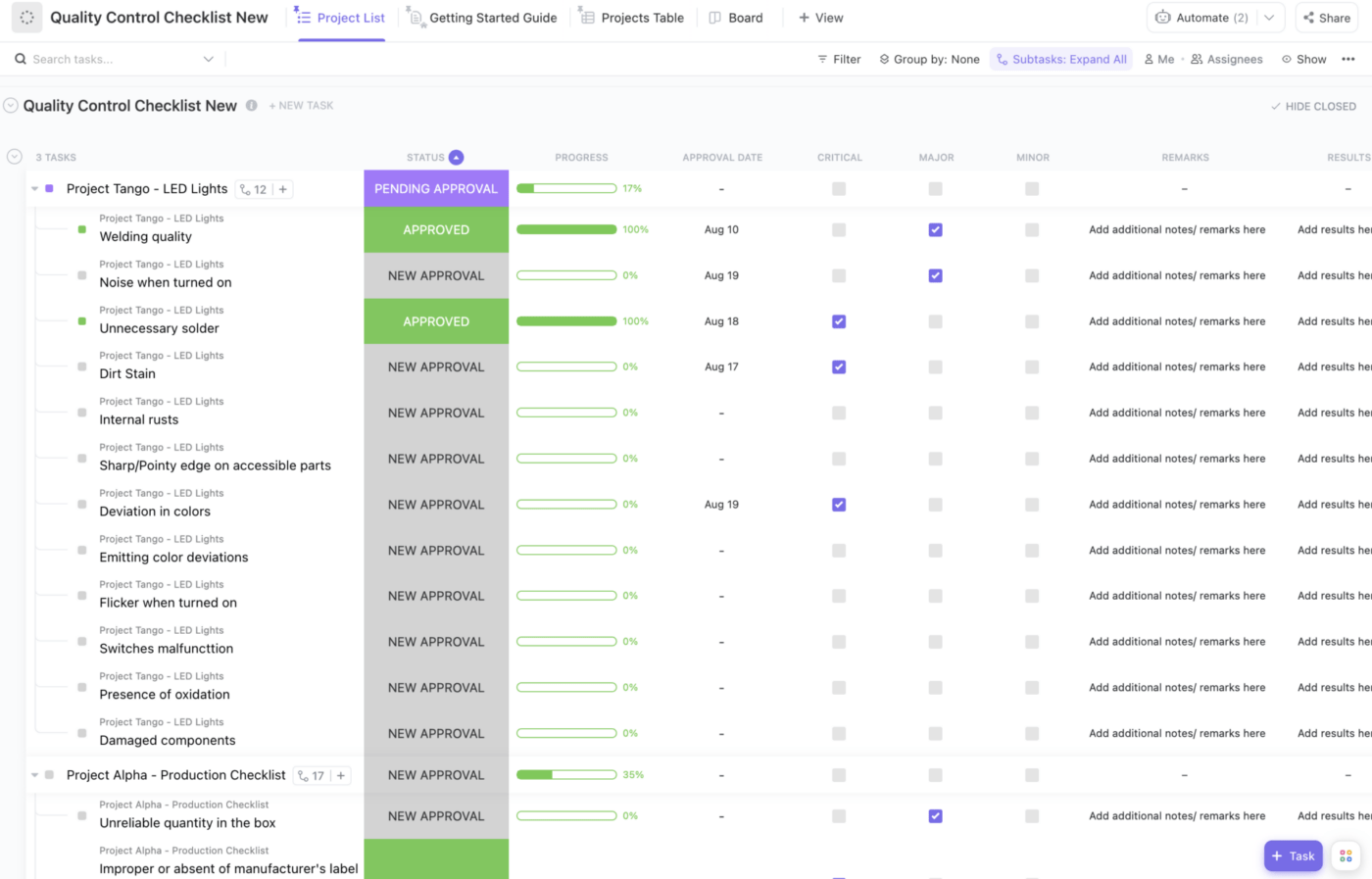
5 Strategies to Manage Project Requirements
A detailed and well-structured plan will be the source of truth to manage the requirements of a project and meet the desired goals. Here are five strategies that will help you manage your project requirements effectively!
1. Get insight from project leads
Prioritizing the collected requirements is a non-negotiable task for the project team. This process brings alignment among all stakeholders about the project’s goals and objectives and keeps the project on track.
Understanding the relationships between requirements and identifying the most critical ones for project success are key elements of effective prioritization. By establishing clear priorities, the team can focus on implementing the most essential features and functionalities, maximizing the project’s impact, and delivering value to stakeholders.
More importantly, it covers any dependencies you’ll need to be aware of. You’ll be able to create a logical sequence of activities so that one task is completed before another can start. This prevents inefficiencies and avoids delays caused by tasks being done out of order!
2. Conduct requirements elicitation workshops
Requirements elicitation workshops are essentially brainstorming sessions to discuss the requirements of a project. These workshops involve stakeholders from relevant departments like development, marketing, sales, and IT, who gather together to brainstorm and refine ideas into tangible project requirements. During these sessions, tools like mind maps or digital whiteboards can be used to collaborate in real-time or asynchronously.

Once all requirements have been evaluated and prioritized, the project team can move on to developing the detailed project plan. This will include a timeline, budget, resource allocation, and any other resources that are required for the successful completion of the project.
Reference your mind map or Whiteboard from the workshop and continue pulling information as needed!
3. Follow an Agile project management process
In today’s fast-paced and rapidly evolving business landscape, agile project management has become a critical approach for successful project delivery. Agile methodologies are designed to adapt to change, foster collaboration, and prioritize customer needs, making them well-suited to address the complexities of modern projects.
Agile project management excels in adapting to change, prioritizing customers’ needs, promoting collaboration, speeding up time to market, and fostering continuous improvement.
When setting up an agile requirement management system, it is important to consider the following:
- Establish roles and responsibilities for each stakeholder
- Create a set of criteria for determining when changes should or should not be made to the requirements
- Define a clear process for managing changes to project requirements
- Establish reporting mechanisms that allow stakeholders to track progress and address potential issues
- Set up communication channels between stakeholders so everyone is notified of any changes or updates

4. Apply a change control process
Building a robust change control process is essential for managing changes to project requirements and ensuring that they are properly evaluated, approved, and implemented.
Here’s a quick step-by-step guide to creating an effective change control process!
Define change categories: Identify different types of changes that may occur during the project, such as scope changes, requirement modifications, schedule adjustments, or resource reallocations. Categorizing changes helps in understanding their impact and defining appropriate approval levels.
Formulate change request procedures: Establish clear procedures for submitting change requests. Define the required format, documentation, and information that stakeholders should include in their change requests. This verifies that change requests are well-structured and include all necessary details for evaluation.
Conduct a change evaluation and impact analysis: Develop criteria for evaluating change requests. Determine who will be responsible for assessing the proposed changes and conducting an impact analysis. This analysis should consider factors like project timeline, budget, resource availability, and potential risks.
Design an approval and review process: Designate an approval authority or change control board responsible for reviewing and approving or rejecting change requests. Set up a regular review schedule to assess change requests promptly, preventing delays in project execution.
Implement a communication plan: Inform all relevant stakeholders about change requests, evaluations, and decisions. Maintain detailed documentation of each change request, the evaluation process, and the final decision to give full transparency and accountability.
Add approved changes: Once a change request is approved, incorporate the changes into the project plan and communicate the updates to the project team and other stakeholders. Track the implementation progress to see if changes are appropriately executed.
Monitor and measure impact: Continuously monitor the impact of approved changes on the project’s progress, budget, and scope. Regularly review the effectiveness of the change control process itself to identify areas for improvement.
5. Use a Requirement Traceability Matrix (RTM)
A requirement traceability matrix (RTM) brings all the strategies we’ve covered together under one digital roof. Its purpose is to establish and maintain a clear link between project requirements and project deliverables. Here’s how to use an RTM:
- Requirement identification: Begin by listing all project requirements in the first column of the matrix
- Deliverable mapping: In the following columns, map each requirement to the project’s corresponding deliverables, such as design documents, code modules, test cases, and user manuals. This establishes a direct relationship between what needs to be delivered and the requirements driving those deliverables
- Verification and validation: During the project’s execution, the RTM helps assure each requirement is addressed. As each deliverable is completed, verify and validate that it meets the associated requirements listed in the RTM
- Impact analysis: When there are changes to requirements or project scope, use the RTM to conduct impact analysis. Determine which deliverables are affected by the changes and assess their implications on the project timeline and resources
- Scope control: The RTM aids in scope control by providing a clear understanding of the requirements coverage. Any new requirement should be added to the matrix, and the team must check that all relevant deliverables are identified and addressed
- Communication channel: The RTM fosters transparency among project stakeholders. It provides a comprehensive view of how each requirement contributes to project deliverables, making it easier to communicate progress and status to stakeholders
- Project documentation: The RTM serves as a crucial part of project documentation. It helps in compliance and regulatory audits by demonstrating the alignment between requirements and the delivered product
Get started with the ClickUp Traceability Matrix Template!
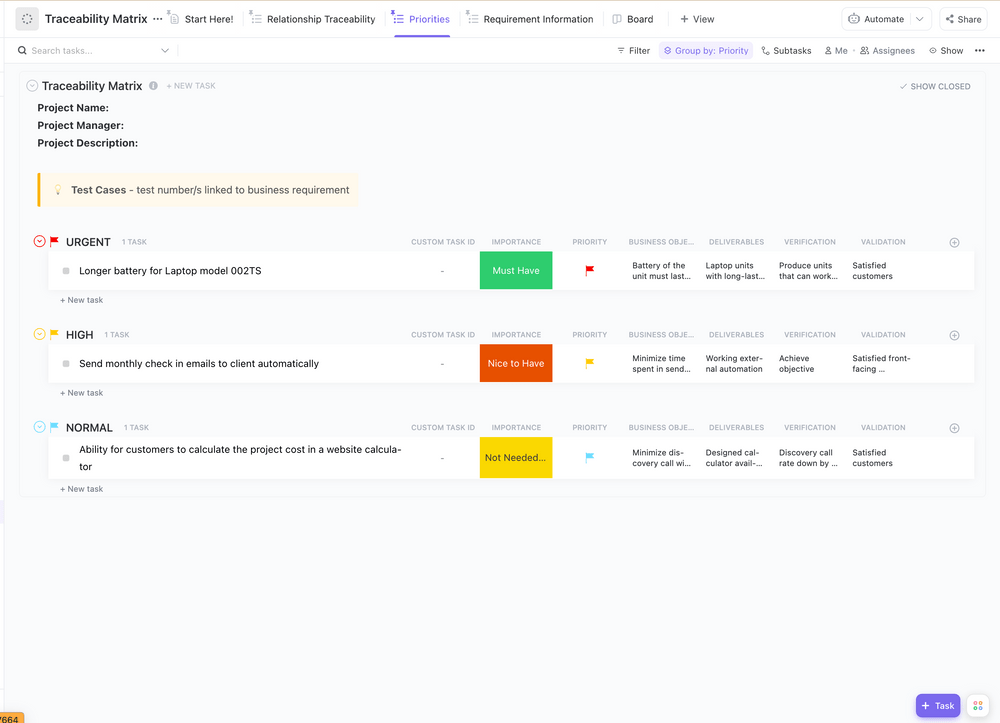
Manage Your Project Requirements in the Digital Age
Writing project requirements is a fundamental pillar of setting up the entire project management body for the success of any project. Well-defined and structured requirements serve as the blueprint that guides the entire project lifecycle, from planning and execution to monitoring and control.
By investing time and effort into the requirement-gathering process, project managers and stakeholders can set clear expectations, mitigate risks, and align all team members toward a common goal!




